Nature gave us a variety of all sorts of plants. One ultrasound of amazing representatives of Flora - Thyme creep. In addition to the widespread use of this plant in landscape design, it is famous for both a wide range of useful properties. It is not difficult to grow thyme creeping, it is enough just to know several nuances of planting and the right leaving of the plant. Today's article is devoted to the description of an amazing plant - Thyme of Czczuchny and the rules of its cultivation in the open soil.
Timyan Creeping: Description
If Timyan creepsy grows on the site or, as it is customary to call him in the people, the chamber, then it is default to become more comfortable and cute. This plant has a spicy warm smell and steamed carpet from small leaves and colors.
Timyan Creeping belong to the genus of thyme from the Crank family. This plant is a perennial shrub up to 15 centimeters in a height, ending with laying escape. Coloring branches are straight or slightly raised, forming turfs.
Cabinet elliptical leaves or slightly oblong-elliptical, 5-10 millimeters long. Sheet width from 1 to 3 millimeters. The foliage grows on short stiffs with glands, which contain essential oil. It is noteworthy that the thyme is not twisted at the edges, like other representatives of this kind.
Inflorescences form compact heads with a narrow-solid cup, long, on average, 4 millimeters. Coloros shorter cups. In the Union, a whisk and a cup of double, a purulent-pink whisk, up to 7 millimeters long.
It is noteworthy that the fruits grow in Thyme to grow - small ellipsoidal nuts up to 0.5 millimeters in length.
Flowering occurs depending on climatic conditions, it can begin at the end of May until the end of August. Fruit plants from July to September.
It is noteworthy that not only the flowers have decorativeness, but also perfectly look at the leaflets themselves - small, saturated green. Landing and Care Thyme Czczuchantly in the open soil gives back easy even inexperienced gardeners, so this plant is ideal for newcomers.
It is worth noting that many gardeners are confused by Timyan creep and ordinary. The main difference is that the second leaves are twisted and slightly curved. Thyme creep has a smooth foliage without envy.
Timyan Creeping: Photo
Properties of thyme crawled
The beneficial properties of Tymeyan are widely recognized in folk medicine. It is used:
- for the treatment of neuralgia;
- in neurosis;
- as a diuretic;
- to normalize the operation of the gastrointestinal tract;
- with intestinal spasms and meteorism;
- to normalize intestinal microflora;
- as a disinfectant;
- as an antipyretic agent;
- as an anticonvulsant.
For medicinal purposes, an overhead part of the plant is applied, which is collected in June-July. Useful properties are determined by the rich composition of the plant. It contains:
- essential oil;
- resins:
- flavonoids;
- debilles;
- mineral salts;
- bitterness;
- acids: oleonic, ursol, hardware, coffee, thymuncia, chlorogenic.
It is also worth noting that thyme creep is an excellent honey, that is why this type of plant is not rarely planted near the apiary. During the collection of honey, honey from the thyme is felt especially good - he is fragrant, with an incredible taste. By the way, thyme fragrance fragrance has received his recognition in perfumes and is not rarely used when creating perfume.
Thyme creeping: varieties, varieties
Tymeyan Creeping loved to many gardeners not only for their beauty and favor, but also for what it blooms continuously throughout the summer. This plant has several varieties. Most often in landscape designs are used as:
- Donna Valley. Such a chabret grows a dense, colorful carpet. The leaves of thyme is crying for this species bordered by a yellow strip. Flowering permanent, pink flowers of different shades;
- Colchida. The chabret of Kolkhida is low near the earth, on average, no more than 10 centimeters in height. Flowers are light, gentle lilac color;
- Silver Queen. It is characterized by a height, compared to other plants of this species, and grows up to 20 centimeters in height. Carpet loose with gray leaves, bordered white stripe. Inflorescences are densely, pale purple flowers.
Timyan Creeping: Landing
The cultivation of thyme crawling is not a difficult thing and does not require high time, money and strength. Nevertheless, it is worth paying special attention to some details of the cultivation of this plant.
Grind thyme creeping should be on light loose soil. The plant is well perceived by sunlight, which is why when choosing a place for landing through a chastard, it is best to give preference to a well-lit plot.
How to plant seeds of thyme creeping
- In the fall, the plot on which the thyme will grow, breathing well.
- In the treated ground add organic fertilizer. The best compost or manure is suitable.
- In the spring, when the air temperature consistently holds at the mark above 13 degrees, the soil is swap again.
- After the earth will rush, seed seeds.
- Suffense seeds soil spray with river sand (it will provide seeds with nutritional elements and will not give to form water stagnation).
- After the seeds go and get fixed slightly, to break them. The distance between the plants should be 30-35 centimeters, so separate chasting shoots will not "score" each other.
It is worth noting that the seeds do not always spare in the open ground for a number of reasons (due to temperature drops, abundance or lack of moisture, etc.) That is why it is best to plant thyme creeping into open ground with seedlings.
How to plant thyme creep in the form of seedlings
- At the end of winter, having a crawling thyme creep into garden trays with a special soil mixture (ask the horticultural store and you will be offered the best plants for this type).
- Trays are placed under the glass that will act as a greenhouse.
- Capacities with seeds put near the window, so that the sunlight is well hit.
- Water seeds as soil drain, but not plentiful.
- After 4 weeks, make seedlings to open air for hardening. Choose a place that is not blocked by winds and where there are no drafts.
- After 2 weeks of hardening, make a landing in an open soil, placing seedlings at a distance of 30 centimeters from each other.
Timyan Creeping: Care
In order for the plant to be lush, beautiful and quenched with a rich carpet behind it needed a permanent care. Timyan Creation Rules:
- After landing through the chastard and shoot seedlings, the plant must be placed. To do this, simply tear off the tip of the main stem and the chamber can in the future can form a lush bush.
- The chabret, like other perennial plants, needs pronouncement. For this, in the fall, when the flowering of the plant ended, rooted the bushes. Thus, with each new season, the thyme creep will acquire more lush, decorative shape.
- Thyme creeping needs regular weeding and weed removal. Otherwise, the "harmful" plants "score" the chamber and it will begin to hurt.
- Next to the chamber is not desirable to plant tall plants that have a rapid growth.
- Watering the chamber is not more often two times a week with a arid climate and even less often with not too hot weather.
- For the winter, the chabret is recommended to cover with deciduous humus.
Timyan Creeping: Fertilizer
The chabret is not too demanding for various fertilizers and feeding. But it is worth noting that this plant categorically does not like to enter fresh manure into the soil. It is possible to easily help the thyme wood, which will not only contribute to the soil of the nutrient elements, but also reduce the acidity of the soil.
During the first year of the growing of thyme smoke in the open soil, it can be fertilized by its urea early spring, even to the first germs of the plant. Mineral fertilizers allowed only after the second year of the life of the Thyme.
The reproduction of thyme crawled
Modify thyme creeping in three ways:
- seeds;
- cuttings;
- dividing bush.
The reproduction of thyme creeping seeds
How to produce seed reproduction.
- Prepare the planting material in advance. In the fall, collect seeds, put them on a paper litter in a well-warmed sun (the ideal option is the windowsill) and leave to dry up to complete drying. Dried seeds put in a paper bag and store place in the place protected from moisture until sowing.
- Prepare tray for sowing and ground mixture, which can be purchased in the horticultural store.
- In the early spring, drink seeds in trays with a fit prepared in advance. Seying seeds should not be deep, maximum, by 2-3 centimeters.
- After sowing, spray the ground with an accumulated water from the spray.
- Close the tray with a film to create a greenhouse effect.
- Water seed 1-2 times a week, but not plentiful to prevent water stagnation.
- After the climbing seedlings, let it grow up.
- Freshing seedlings, approximately 4 weeks after drying, remove to open air for hardening.
- After 2 weeks of hardening, transplant the sprouts into the open ground to the permanent habitat of the chasty.
Shining thyme crawled
How to make the shilling of thyme crawling.
- In the fall or in the spring, during the trimming of thyme, select the strongest sprigs on the plants.
- Selected twigs cut as close as possible to the base.
- Pour water into the glass, add 1/4 hours. L of honey and prettier stir the liquid.
- Thyme twigs drop into the water and leave it for a day for better rooting of the plant after disembarking.
- Prepare tray and soil for disembarkation. Earth can be taken as a conventional garden and shop soil substrate.
- On the selected, for disembarking, branches from a part that will be in the ground, remove the leaves in order to avoid posting.
- Moisten the land in the tray.
- Using a thin garden tool, make a thin shallow hole in the ground.
- Pose in the pocket of the stalk and sprinkle the earth.
- Tray with cuttings place in a well-lit place and warm by the sun.
- 1-2 times a week water the cuttings. It is worth noting that watering should not be abundant in order to avoid water stagnation.
- In a month, rooted cuttings, transfer to open ground at a permanent habitat.
The division of the bush of thyme crawling
It is worth noting that the divisions of the bush is very painful to the plant. Nevertheless, this method of breeding thyme has a place to be. How it is produced.
- Well rooted bushes that grow on a plot for at least 2 years, completely dig out of the soil. The division of the thyme bush is best in the spring, before the start of flowering plants.
- The roots of the digged bush will be released as much as possible from the ground, through the blowing of the soil. At the same time, it is very important not to damage the root system.
- Rugged bush manually divided by half.
- Using the shovel to dig 2 shallow landing pits.
- Half a bush to put in the first landing fossa, the remaining part is to the second.
- Busts spray the earth, the ground is a little tamper.
- Hiding planted plants with water.
Timyan Creeping: Pest
The chamber is fairly resistant tolerates the attacks of pathogenic bacteria and pests. The main enemies of thyme are:
- weevil;
- aphid;
- meadow moth;
- sand medulla.
Such pests can overcome fertilizers containing lime and alkaline compounds. In addition, the looping of the root area of \u200b\u200bthe soil and regular weeding can help.
It is worth noting that thyme creeping may be affected by the diseases of fungal type. This is due to the violation of the cultivation instruction. Namely:
- due to excessive irrigation;
- with rare weeding;
- because of the shading of thyme by other plants.
Timyan Creeping in Landscape Design
Thyme creeping - a low-spirited plant that is steel by a rich carpet. That is why the most favorable use of this plant in the form of a background for an alpine slide or mixboard. In addition, the chabret looks profitable on stony oids.
It is worth noting that thyme creep well looks in group or joint plantations. It can be used as a background for plants with large textural foliage. Moreover, since the chabral is a plant with a bunt and attractive insect pollinators, it is not rarely planted near the cucumber beds or similar crops, to improve their pollination.
Timyan Creeping - In truth, an amazing plant whose cultivation brings exceptionally pleasure. When falling out the videos, except for profitable bushes with small amazing flowers, you will also get an incredible fragrance that will delight you all summer.

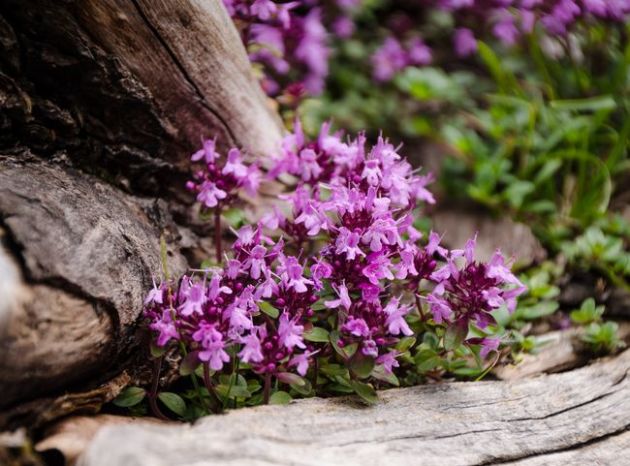
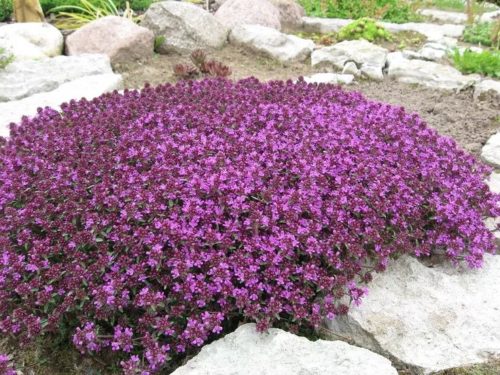
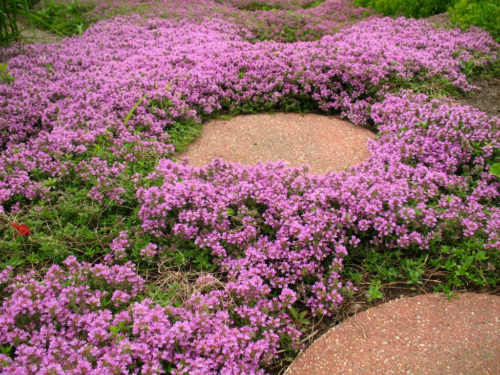
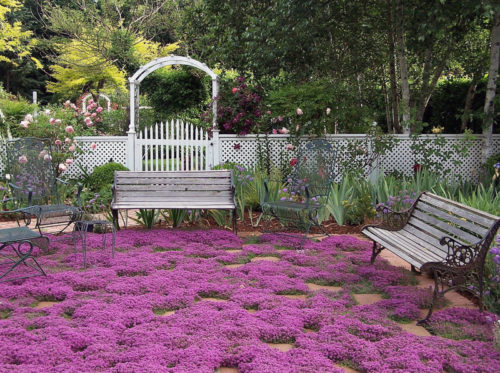
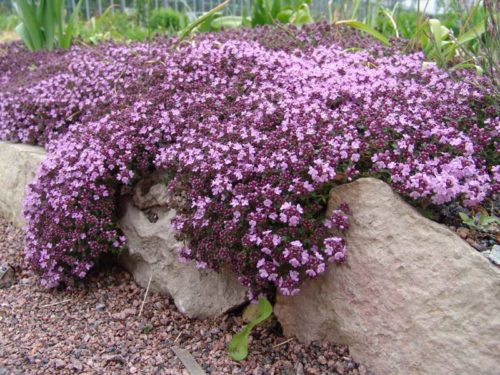
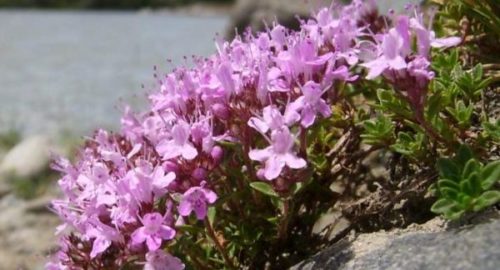

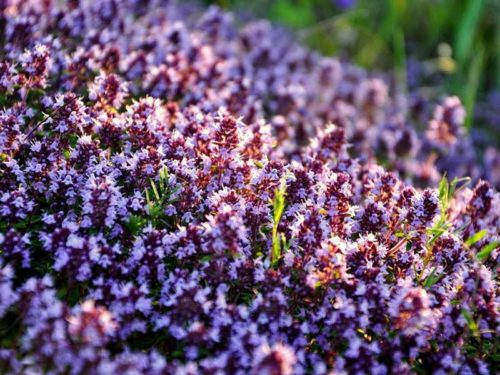
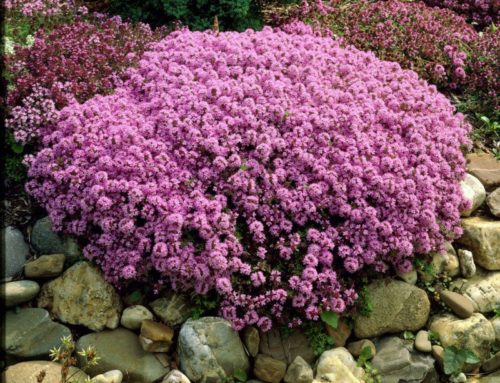
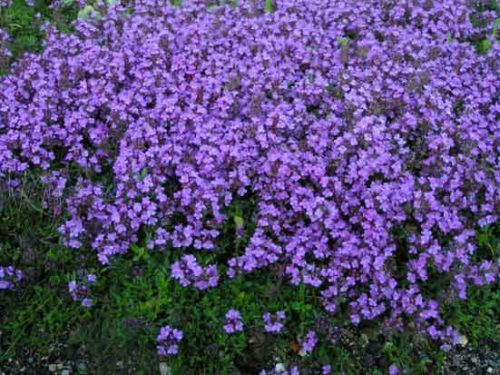
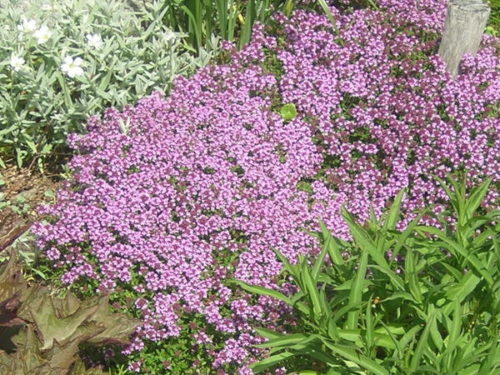
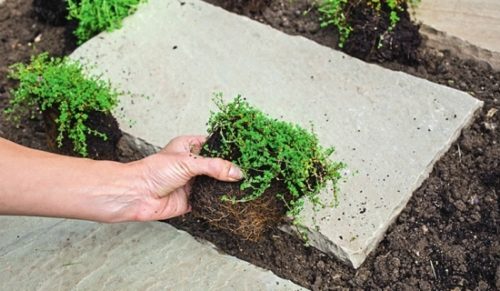
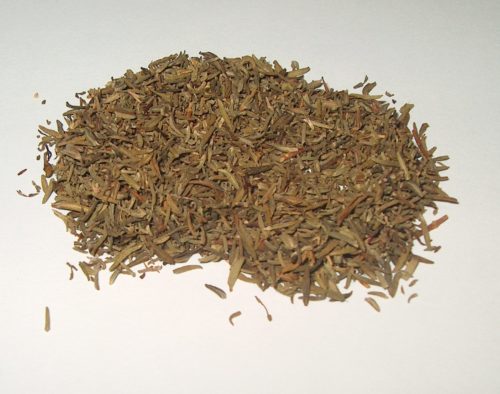
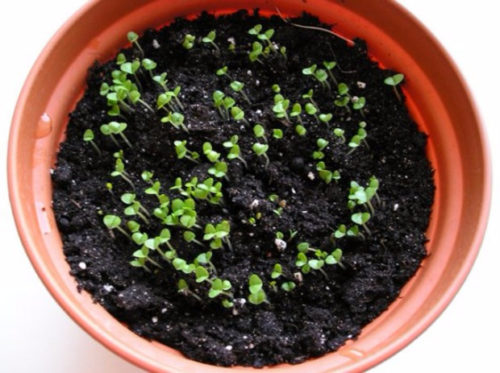
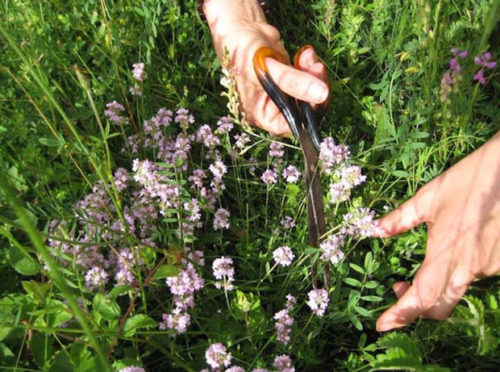
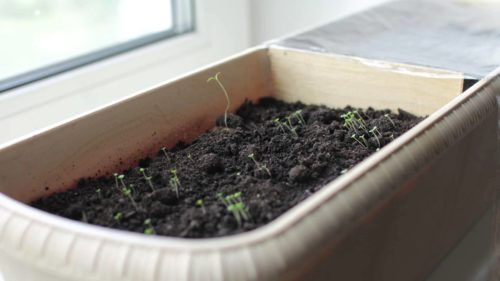
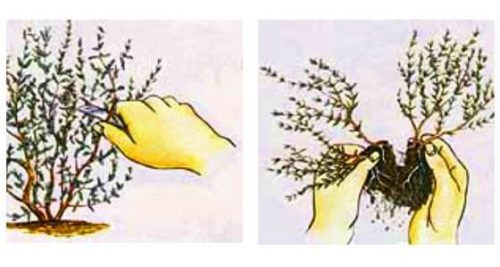
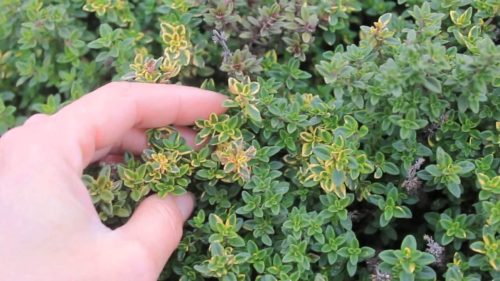

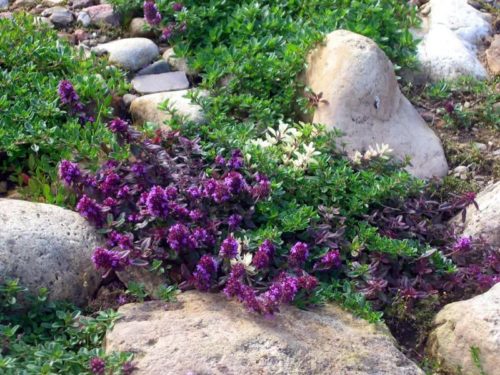

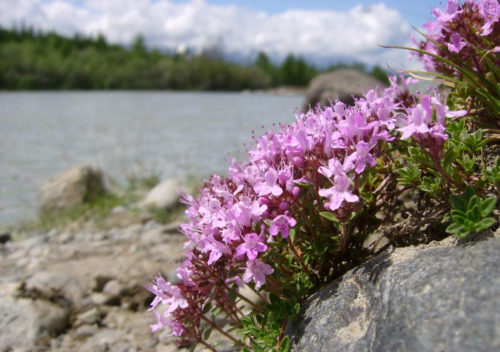












 Start a discussion ...
Start a discussion ...